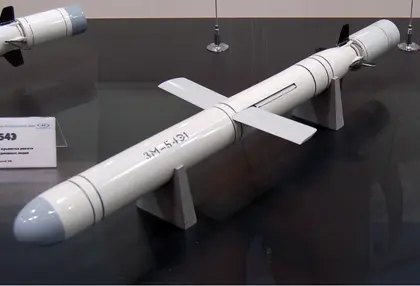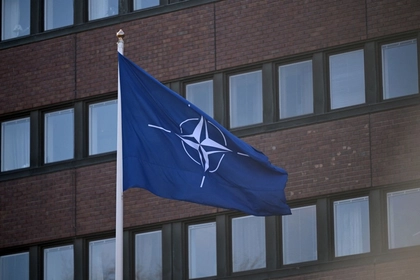Yesterday, April 26. Russian forces launched yet another strike, this time against the southern Ukrainian port city of Mykolayiv, which killed one civilian and injured more than 20.
What was the weapon they used? What’s a rocket as opposed to a missile? What weapons of which type have they used? How many does Russia have? Kyiv Post addresses the questions.
JOIN US ON TELEGRAM
Follow our coverage of the war on the @Kyivpost_official.
The Terminology
There is a difference between what we, in the media, commonly refer to as ‘rockets’, ‘missiles’ and ‘unmanned aerial vehicles (UAVs)’ and it is important to understand the differences.
A ROCKET is a self-propelled, UNGUIDED weapon powered by a rocket motor. Its targeting and trajectory is based on the angle of its launch and the amount of propellant it consumes and how far it can travel. Rockets are generally surface-to-surface weapons and part of land-borne artillery operations (though some can be fired from planes and helicopters).
A MISSILE is a self-propelled, GUIDED weapon powered by a jet engine or a rocket motor. Many can change path mid-flight.
Missiles have five system components: targeting, guidance system, flight system, engine and warhead. Missiles come in types adapted for different purposes: surface-to-surface and air-to-surface missiles (ballistic, cruise, anti-ship, anti-submarine, anti-tank, etc.), surface-to-air missiles (and anti-ballistic), air-to-air missiles, and anti-satellite weapons.
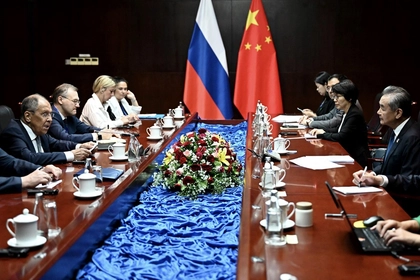
Russia, China FMs Meet as ASEAN Talks Get Underway in Laos
The rule of thumb is that missiles are more accurate than rockets as a result of being more technically complex (and therefore more expensive).
A DRONE, which more accurately should be called an UNMANNED AERIAL VEHICLE (UAV), is a "powered, aerial vehicle that does not carry a human operator, uses aerodynamics for lift, can fly autonomously or be piloted remotely, can be expendable or recoverable, and can carry a lethal or nonlethal payload.” Other than kamikaze drones, such as the Iranian-built Shahed’s used by Russia, UAVs are generally vehicles used to target other weapons rather than act as weapons per se.
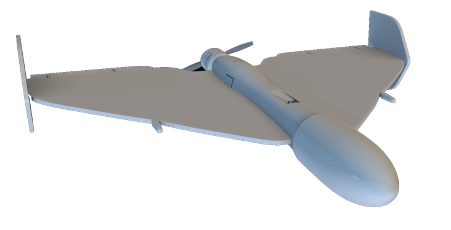
Shahed-136 UAV
The Types
Russia uses different combinations of rockets and missiles for different purposes.
However, during its full-scale invasion of Ukraine, Russia has exhausted supplies of many of its weapons and has resorted to using replacements that were not designed for the purpose to which they are employed.
For example, Russia has repeatedly used KALIBR MISSILES – high-tech, multi-million-dollar weapons designed to attack and neutralize battleships and other large items of equipment – to hit residential buildings. In general, though, some of the main types of rockets, missiles and weaponized drones used are:
Rockets
BM-27 Uragan multiple rocket launch system (MLRS). These are 220 mm rockets mounted in groups of 12 or 16, depending on the model, and normally fired from truck-mounted launchers against military formations in the field. Modernized in 2008, the rocket from the Uragan (Russian: ‘hurricane’) is effective up to 35 kilometers. They can be fired in salvos of up to 12/16 at a time. Russia reportedly has up to 900 Uragan systems.
BM-21 Grad multiple rocket launch system (MLRS). A Cold War era weapon, Grads 122 mm rockets which are also fired from a truck-mounted launcher. Grads (Russian: ‘hail’) can travel up to 52 kilometers. Normally fired in salvos of up to 40 rockets at a time, it is a notoriously indiscriminate weapon of which Russia reportedly has more than 3000 systems of varying ages and modifications.
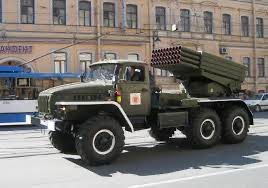
Grad MLRS.
Missiles
SU-300. Due to dwindling stocks of more expensive and regular offensive missiles, Russia has increasingly used the SU-300, originally intended as surface to air weapon dating from 1978 and which can be launched from tractor trailer type vehicles. While designed to counter long-range missiles, Russia is now using the SU-300, with a range of around 40 kilometers, to attack land targets with devastating effect.
KH-22. Dating from 1962, the KH-22 is a Cold War era weapon designed to hit US aircraft carriers. Launched from planes, the KH-22 can travel around 600 kilometers and costs around $1 million per unit. In June 2022, a KH-22 fired from a bomber was used to attack a shopping center in the city of Kremenchuk which killed 20 people.
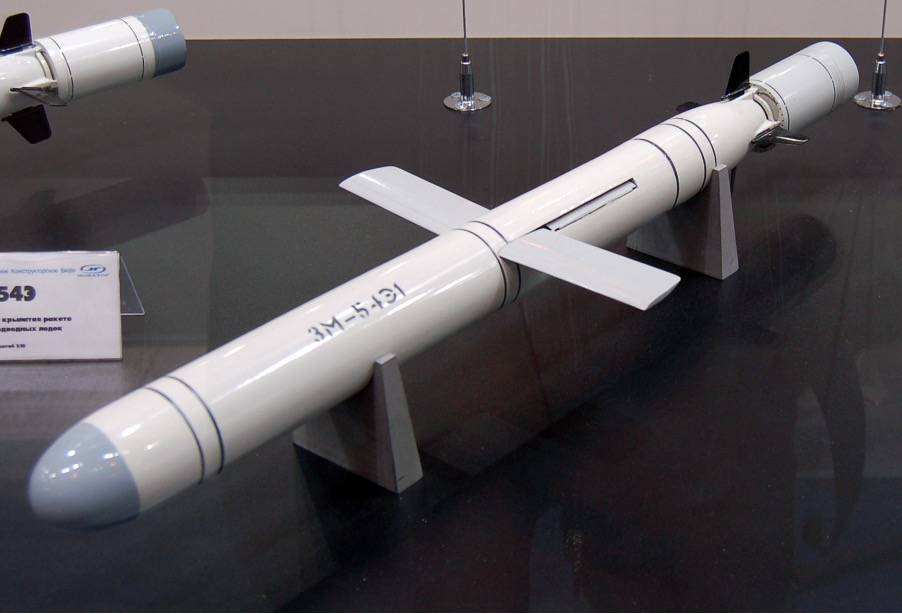
Kalibr missile.
Kalibr. This high-tech missile, which dates from the 1990s, can be launched from either the sea or the air with a range of up to 4500 kilometers. With price tag of $6.5 million each, the Kalibr was designed to take out high-value, major NATO assets at vast distances. Kyiv Post has sighted structures – such as the town halls of Kharkiv and Mykolayiv and residential buildings in Saltivka outside Kherson – which were hit by Kalibr missiles.
Unmanned Airborne Vehicles (UAV)
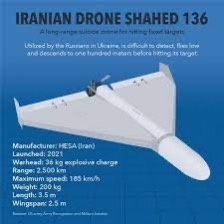
Shahed-136/Geran-2s. This weapon is an armed drone. Manufactured in Iran and modified in Russia, it is estimated that the Shahed can fly to a range of between 1000 and 2500 kilometers and then loiter near its intended target before attacking in a ‘kamikaze’ fashion. The Geran (Russian: ‘geranium’), the Russian version of the Shahed, is easily launched from the back of low-tech vehicles as it only weighs around 200 kilograms with a wingspan of 2.5 meters. A Shahed costs around $20,000 – as opposed to a surface-to-air missile used to shoot it down which can cost up to $430,000.
Shaheds were extensively used by Russia in its attempt to destroy Ukraine’s energy system in the winter of 2022/23. The number of Shaheds that Russia has is unknown, but ‘guesstimated’ as being in the “hundreds” by Western intelligence officials. Ukraine’s Ministry of Defence claims that there were up to 750 and that now there may be less than 90 – although serial numbers, of recently encountered Shaheds, suggest Russia may have received a resupply from Iran.
The Numbers
The following infographic was released by Ukraine’s Ministry of Defense in January 2023. Since that time, Russian stockpiles have further decreased. For example, government spokespeople have this month stated that Russia in now down to 7% of its original stockpile of Kalibr missiles.
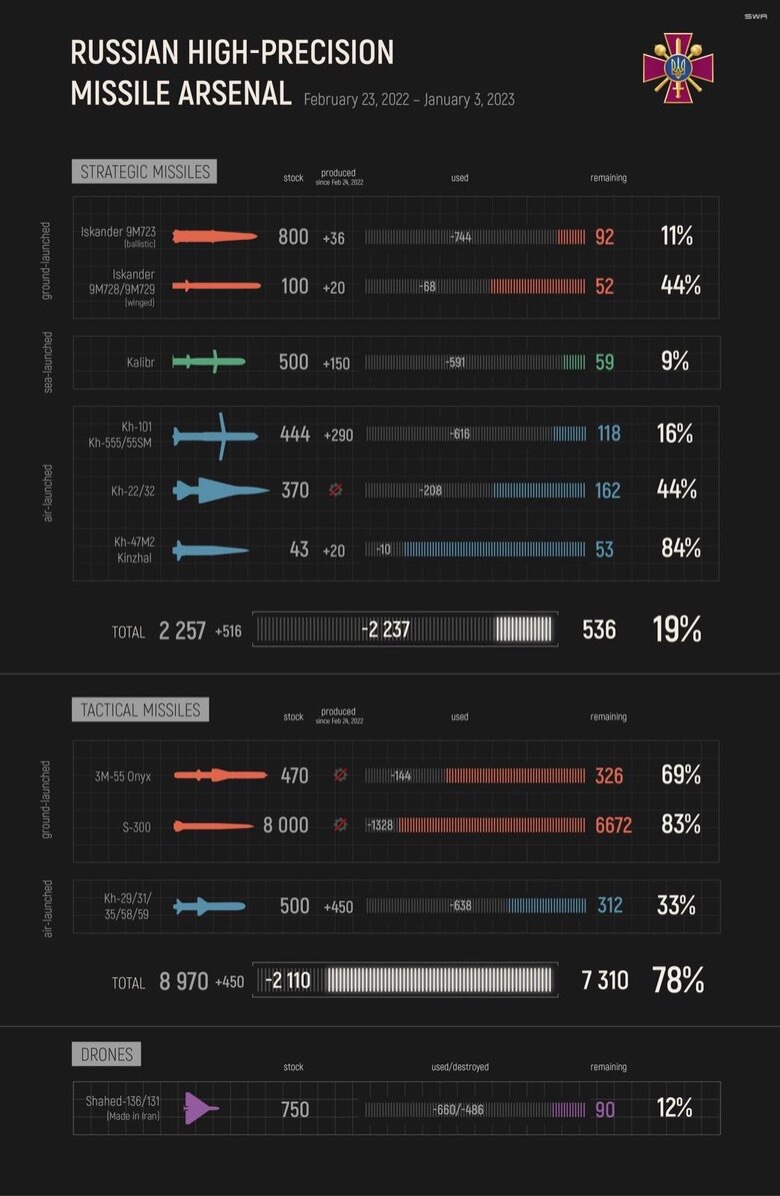
You can also highlight the text and press Ctrl + Enter


